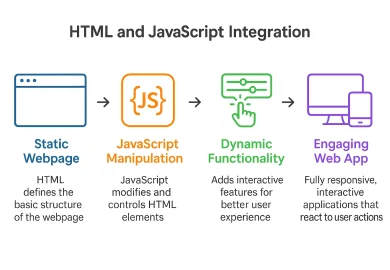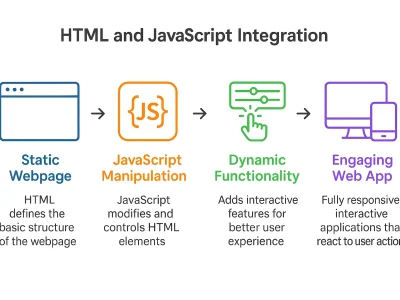Introduction
AI automation has seen continuous growth since its launch. According to Precedence Research, “The global artificial intelligence (AI) market size was USD 638.23 billion in 2024, calculated at USD 638.23 billion in 2025, and is expected to reach around USD 3,680.47 billion by 2034, expanding at a CAGR of 19.20% from 2025 to 2034.”.
This gives businesses a reason to solve the productivity problems of escalated operational costs, a shortage of available talent, and overshooting customer expectations. AI automation not only provides a way forward that avoids simple mechanisation but also unlocks the ability to continually learn and adapt systems, improving them in real time. Automatic systems driven by algorithms respond effectively to the pace of modern business, enhancing widespread automation. This solution answers the needs of the business. AI automation makes the answers accessible at a click and helps businesses to solve problems through streamlined workflows, improved decisions, and more responsive systems.
In this article, we aim to explain AI automation and its enhancement of traditional systems, core technologies, operational frameworks, its benefits and applications across industries, key implementation strategies, and what to expect in the future. By the end, you should gain insight into AI automation and its value as a strategic enterprise asset.
Key components of AI automation include
AI automation is the integration of AI technologies into automated processes, allowing systems to learn, adapt, and make decisions on their own without human assistance. This system focuses on intelligent systems that adapt and evolve.
Automation driven by AI technology is geared toward systems such as chatbots. Predictive maintenance and customer service Chatbots are just some areas where the difference is visible.
In summary, the responsibilities of human employees are changing alongside the processes put in place to do the work, with the repetitive work now being transferred to machines.
How AI Automation Differs from Traditional Automation:
Conventional automation relies on set rules to function. Although it works well with repetitive tasks that require little thought, it is unable to change and adapt to unique situations.
On the other hand, AI automation is adaptive. Its AI features use predictive analytics, natural language analysis, and self-learning algorithms to make precise choices instantaneously.
In making decisions, traditional automation uses “if this, then that” structures. AI automation follows more complex logic and is capable of taking into account trends, context, and other multifactorial variables.
In the case of overlap with unstructured data, traditional automation is incapacitated. AI automation has no such obstacles and even welcomes unstructured data, be it images, text, or images from real-time sensor systems.
Core Technologies Behind AI Automation
AI automation is a collaboration of multiple technologies. The following are the foundational ones:
- Machine Learning (ML) allows the system to improve from the data collected over time
- Natural Language Processing (NLP) empowers AI to detect and interact with human speech.
- Robotic Process Automation (RPA) automatically handles repetitive and predefined digital processes like data entry and form submission.
- Computer vision is AI’s ability to understand and analyze images and videos.
- Predictive analytics helps in forecasting future trends and outcomes based on historical data.
How AI Automation Works (Technical Framework):
The AI Automation Process
The first step is data collection, where both organized and unorganized data is collected from different sources. The next step is data processing and preparation. Here, raw data is cleaned and organized as per the requirement. The model training phase uses historical data to train AI models on predictions and decision-making. The last but not least step is deployment, where the model is integrated into operational workflows.
Integration and Workflow Management
AI automation provides more value when it works with existing systems. API connections enable smooth data exchange between tools, while real-time processing allows quick decision-making.
Human-AI Collaboration Framework
AI-human collaboration plays a crucial role where AI looks into repetitive and analytical tasks and humans take care of quality assurance. If there is any improvement needed for models, humans provide feedback and also work on their strategic decision-making capabilities. Ongoing performance monitoring makes sure systems stay accurate and effective over time.
Key Differences: AI Automation vs. Traditional Automation
Capability Comparison Table
| Feature | Traditional Automation | AI Automation |
| Adaptability | Low | High |
| Decision-making ability | Rule-based | Data-driven |
| Complexity handling | Limited | Advanced |
| Learning ability | None | Continuous |
| Setup time | Longer | Faster once trained |
When to Use Each Approach
It is important to understand where traditional automation can be used and where we need AI automation.
1. Traditional Automation Is Best For:
- The tasks that are repeated over and over again, like payroll processing, invoice generation, or data entry.
- Where inputs and outputs don’t change.
- The tasks are consistent, but flexibility is not there.
2. AI Automation Is Best For:
- The dynamic tasks, such as supply chain management or fraud detection.
- The data that needs predictions, pattern recognition, or understanding common language.
- The tasks that are complex and need logical and analytical reasoning, and conceptual understanding.
3. Selection Criteria:
Selection criteria depend upon various factors like the type of work, whether data are available, and what the purpose of the selection is. We need to understand whether the work is static or dynamic, and whether we have sufficient data for AI to learn, or whether we need smart decision-making or fast work.
4. Implementation Considerations:
Implementing an automation process requires a few factors that need to be considered.
- Cost and resources – It is lower for traditional automation, whereas it is higher for AI automation, as the latter requires more data and computing power.
- Skill requirements – Traditional automation can be easily handled by process engineers, whereas AI automation needs an expert in AI and machine learning.
- Scalability and maintenance – Traditional automation needs more maintenance as it needs regular manual work to keep it updated, whereas AI solutions adapt over time.
Key Benefits of AI Automation:
Business Impact Metrics
AI automation leads to significant improvements in productivity. Generative AI alone could add $2.6–4.4 trillion annually to the global economy (McKinsey, 2023). Its use could raise annual productivity growth by up to 3.4 percentage points (McKinsey, 2023).
Employee Benefits
With AI being in a role, employees can use their time and focus on strategies and skill development, which can add value to their growth and job. Research indicates that generative AI assistance boosts support agent productivity by 15%, particularly benefiting lower-skilled workers (Brynjolfsson et al., 2023). AI has also increased the employees’ job satisfaction rate.
AI Automation Industry Applications:
Customer Service & Support
Customer service has been one of the first and most effective areas to adopt AI automation, changing how businesses connect with their clients.
-
Implementation Examples
Companies are using AI chatbots, virtual assistants, and voice-based AI systems in their customer service. These tools connect to CRM systems, allowing them to access customer histories and offer personalized support instantly.
-
Use Cases
- Chatbots and IVR systems provide 24/7 automated support
- Self-service portals are there where customers can find solutions
- Multilingual assistance for different customers.
-
Results and Metrics
- There is a stark drop in routine inquiries by 60–80% that earlier agents used to answer
- Response time has become faster; on average, it’s under 5 seconds for basic questions.
- Higher customer satisfaction rating due to instant help and support.
-
Success Stories
- E-commerce brands that are using chatbots have mentioned a 40% decrease in ticket volume, an increase in conversion rate by 35%, reduction in first response time by 60%.
- Telecom companies using AI voice bots have observed a reduction in call handling time by over 30% while maintaining the quality.
- Financial service providers that have implemented AI fraud-detection chat assistants have reported having improved trust and a decrease in fraudulent activity.
Manufacturing & Supply Chain
Predictive systems forecast maintenance needs, reducing downtime and improving efficiency.
1. Automation Applications
- AI sensors have predicted faulty equipment and have prevented any kind of damage from the equipment failure.
- Real-time defect detection can be done using automated quality inspections.
- Use of robotics process automation for tasks in warehouses, like picking, packing, and sorting.
2. Business Impact
- Proactive maintenance has lowered the downtime
- Operational costs have been reduced by optimizing production schedules and logistics planning.
- Automated inspections have improved product quality and reduced human errors.
3. Performance Metrics
- A 15–30% reduction in production line downtime. (massivue.com)
- A 25% increase in manufacturing.
- A significant reduction in the defective production rate
4. Case Studies
- Automotive manufacturers use robots in assembly lines, which helps them achieve consistent output quality and shorter production time.
- AI has helped many global logistics companies in optimizing routes, lowering fuel costs, and improving delivery reliability.
- AI inspection has helped in catching micro-defects in Electronics manufacturing, thus preventing large-scale failures.
Healthcare & Life Sciences:
AI automation transforms healthcare and life sciences by improving diagnostics, streamlining administrative tasks, and enhancing patient outcomes through data-driven care.
1. Healthcare Applications
- AI helps in catching early signs of diseases like cancer or heart conditions, enhancing the performance of medical imaging analysis
- Predictive analytics has helped in managing disease outbreaks, patient risk assessment, and treatment planning.
- AI has also helped in speeding up drug discovery by identifying required compounds faster.
- Virtual health assistants are there to handle patient queries, follow-ups, and appointment scheduling.
2. Administrative Automation
- Automated billing has reduced the paperwork and calculation errors.
- AI has optimized the claims processing.
- Every patient has a medical history, which is managed by AI electronic health record management.
- Daily schedule and resource management is done for staff, operating rooms, and equipment using AI
3. Patient Care Improvements
- Personalized treatment plans are provided using genetic and health data analysis.
- Remote patients are being monitored with AI.
- Quicker diagnostics have helped in faster treatment decisions.
4. Outcomes Achieved
- AI’s pattern recognition abilities result in fewer diagnostic errors.
- Treatment time has reduced due to faster analysis and reporting.
- Administrative expenses have reduced because of the automation of repetitive tasks.
- Patient satisfaction has increased due to personalized care plans and AI virtual assistants.
AI Automation in Financial Services:
AI automation is transforming the financial sector by speeding up decision-making, improving security, and enhancing efficiency.
1. Implementation Areas
- AI chatbots are used in customer support for account queries, transaction details, and loan applications.
- Predictive analytics has helped customers by providing the best transaction time for algorithmic trading.
- Automated loan processes have sped up the approvals and reduced the manual verification, thus reducing the errors.
2. Fraud Detection
- AI detects the unusual activity pattern in real-time transactions.
- Machine learning models are designed to catch any kind of identity theft, phishing attempts, and card skimming.
- With AI, fraud prevention systems get adapted based on the new fraud tactics.
- Unauthorized accesses have been limited by multi-layered authentication, powered by AI.
3. Risk Assessment
- AI algorithms are designed to predict volatility and economic trends in market risk analysis.
- Portfolio risks are managed for better asset allocation.
- Testing financial models is done to ensure resilience under various market conditions.
4. Performance Results
- Early detection and response have reduced losses from fraud.
- Automated credit evaluations lead to quicker loan approvals.
- It has increased customer trust through better security measures.
- Cost savings have been observed from automating high-volume, low-value processes.
AI Automation in Marketing & Sales
AI automation is changing marketing and sales, allowing businesses to reach the right audience with personalized messages. It streamlines processes, improves targeting accuracy, and maximizes revenue potential.
1. Automation Applications
- Content personalization is done based on customer behavior and preferences.
- Automated email campaigns have triggered specific customer actions.
- Predictive analytics are used for sales forecasting and market trend identification.
2. Lead Management
- Conversion rate is mostly on the higher side due to the AI-automated lead generation, which uses customer preferences.
- The sales team is updated with real-time lead information by using CRM integration.
3. Campaign Optimization
- A/B testing automation is used to find the most effective and creative elements.
- Analyzing the channel performances helps in understanding the platforms that yield the highest ROI and helps in budget allocation.
- Dynamic ad targets the audience segments in real-time.
4. Conversion Improvements
- Personalized product recommendations increase the likelihood of purchases.
- Optimizing the customer journey reduces the friction in buying processes.
- Automated follow-ups usually retain the abandoned carts or inactive leads.
- Making decisions based on data improves sales strategies.
Implementation Challenges and Solutions
1. Technical Challenges
Data inconsistencies and integration issues can hinder progress. A structured data governance strategy and a modular system design can help.
- Common issues are compatibility with outdated systems, algorithm errors, and scalability concerns.
- Data quality problems include incomplete and inconsistent data that hamper the AI accuracy.
- Integration is a major challenge where AI has to be combined with existing systems.
- Data cleaning, API-based integrations, and pilot testing can be used as solutions in these cases.
2. Organizational Challenges
Resistance to change and skill gaps create obstacles. Organizations should focus on leadership support, readiness for change, and thorough training.
- Employees show resistance to changing or learning due to their concerns over job security.
- Skill gaps exist where teams lack AI expertise.
- Process redesign is required for outdated systems.
- Best practices in these cases are clear communication, targeted training programs, and phased rollouts.
3. Ethical and Compliance Challenges
Addressing privacy, bias, and transparency is crucial. Having clear policies and auditing models can help build trust and ensure compliance.
- Privacy concerns are a real threat. Safeguarding customer data from misuse is important.
- Bias prevention is about ensuring that AI models do not perpetuate discrimination.
- Transparency is required in making AI decisions clear.
AI Automation Implementation Roadmap
A structured approach ensures smoother adoption and higher chances of success.
Phase 1: Assessment & Planning (Months 1-2)
Assessment and planning include current analysis to understand the existing processes, data readiness, and technical infrastructure. Next is opportunity identification, which identifies the areas where AI can add the most value. A resource assessment is performed to ensure that the organization has the skills, technology, and budget required. Lastly, strategic planning sets the direction, defining goals, timelines, and success metrics.
Phase 2: Pilot Implementation (Months 3-4)
The second phase is pilot implementation. Here, organizations select a small but high-impact project that serves as a proof of concept. The pilot allows testing and validation, ensuring that AI works as required in the provided environment. Performance benchmarking during this stage documents the improvement and challenges.
Phase 3: Full Deployment (Months 5-6)
The third phase is Full Deployment, where the production rollout of the AI system is targeted at business areas. System integration then ensures that the AI solution works seamlessly with existing software and processes. User training is essential here, helping employees adapt quickly and effectively. Optimization and scaling come last, where the system is assessed for maximum efficiency to expand its use to other areas of the organization.
Essential AI Automation Tools & Platforms:
1. Leading AI Automation Platforms
- Enterprise Solutions: IBM Watson, UiPath, Microsoft Power Automate, Automation Anywhere.
- Platform Comparisons: These are assessed based on cost, features, ease of integration, and scalability.
- Feature analysis considers aspects like natural language processing, predictive analytics, and robotic automation.
- Selection Criteria: Business requirements, security requirements, and user adoption potential must be there as per need.
2. Development Tools & Frameworks
- Programming Libraries: TensorFlow, PyTorch, Scikit-learn.
- Development Environments: Jupyter Notebook, Google Colab, Visual Studio Code.
- No-Code/Low-Code Platforms: Zapier, Make, Power Automate for quick deployment.
- Recommendations: We should choose a platform that balances user-friendliness with scalability.
The Future of AI Automation:
1. Emerging Trends & Technologies
- Artificial General Intelligence (AGI): It performs a wide range of tasks that mimic human reasoning.
- Advanced Integration Technologies: These allow AI systems to work seamlessly across platforms, industries, and even physical devices, creating more connected and responsive business ecosystems.
- Next-Generation Capabilities: They are the ones that have autonomous decision-making and real-time adaptation, and will further expand what AI can achieve
2. Industry Evolution Predictions
- Workforce transformation shows the movement towards hybrid human-AI collaboration.
- Business models change as new service offerings are provided by AI.
- Market Predictions: The AI automation market is projected to grow dramatically over the next decade.
- Future opportunities, as discussed earlier in the article, include personalized products, real-time supply chain optimization, and enhanced fraud prevention.
Getting Started with AI Automation:
Preparation Steps
Before diving into AI automation, organizations must establish a solid foundation for successful adoption and sustainable results. This preparatory phase is essential for aligning capabilities, resources, and expectations.
- Skills Development Requirements
Invest in training programs that build skills in AI, data analytics, and automation tools. We also need to promote cross-functional learning to close the gap between technical teams and business units. - Organizational Readiness
Organizational readiness assesses current process maturity levels, also identifying the areas that can benefit most from automation. Creating a change management plan to tackle cultural shifts and diminish resistance. - Planning Considerations
We need to outline the goals clearly, and not only that but also have a clear understanding of success metrics and expected results for AI initiatives. Risk factors such as regulations, ethical concerns, and data privacy need to be evaluated. - Resource Allocation
We have to allocate the right mix of human, technical, and financial resources for implementation. We also need to focus on building scalable infrastructure that supports future AI growth, which is economical as well.
First Implementation Project
This is an important step towards setting up a suitable environment for all AI automation projects. Selecting the right project, applying a well-planned and organized strategy, and preventing silly errors sets you up for success.
-
Project Selection Criteria
One should focus on and select the projects where the chances of success and measurable factors are higher. The projects that clearly define ROI and impact should be prioritized. One should select the projects for which high-quality data is also readily available.
-
Implementation Approach
The implementation approach should use an incremental developmental methodology and improve continuously based on the feedback provided. Regular communication is a must between technical and business teams during development. Early testing should be done to detect and fix the problems before the full rollout.
- Success Factors
Success factors include strong leadership support and executive sponsorship to drive alignment and commitment. Effective stakeholder engagement is important for success. Monitoring the progress and performance also helps in achieving the target.
- Common Pitfalls to Avoid
Taking it slow and steady is the best policy when it comes to avoiding the pitfalls. Understanding the capability and appropriate use of AI, training of users should be focused. The success of a project and the working of AI models greatly depend on the quality of data, so that also must be taken care of to avoid any pitfalls.
Conclusion:
AI automation is not just a thing of the future- it is a need of the hour for organizations that are willing to invest in change and want to be ahead in competition. From assessment and planning to implementation and scaling, businesses can strategically leverage AI to optimize their operations, improve decision-making, and create new offerings.
Key Takeaways:
We have seen how important AI is in different areas and how we can start with AI. We should have clear goals. Starting with a small-scale project gives us the confidence and builds the foundation for better opportunities. Understanding the importance of data quality is crucial. A strong and reliable dataset is important for a successful AI initiative. Last but not least, training employees as per the need and evaluating their performance closely are very important in the whole process.
Action Items for Readers:
- Identifying a couple of processes that could be targeted for automation in the near future.
- Analyzing organizational readiness and existing skill gaps before starting with the AI process.
- Recognizing the high-value opportunities and starting with a pilot project to get confidence and understanding of the process.
Next Steps for the Reader:
- Carry out an internal AI readiness assessment to find out where you stand.
- Consult with the industry experts to guide you in the first implementation.
- Examine AI platforms and development tools, and leading technology that best suits your business requirements.
- Adopt a continuous learning and improvement cycle and adapt as technology changes.
- The earlier you start on the journey, the sooner you unleash the transformation potential that can shape the future of your organization.




